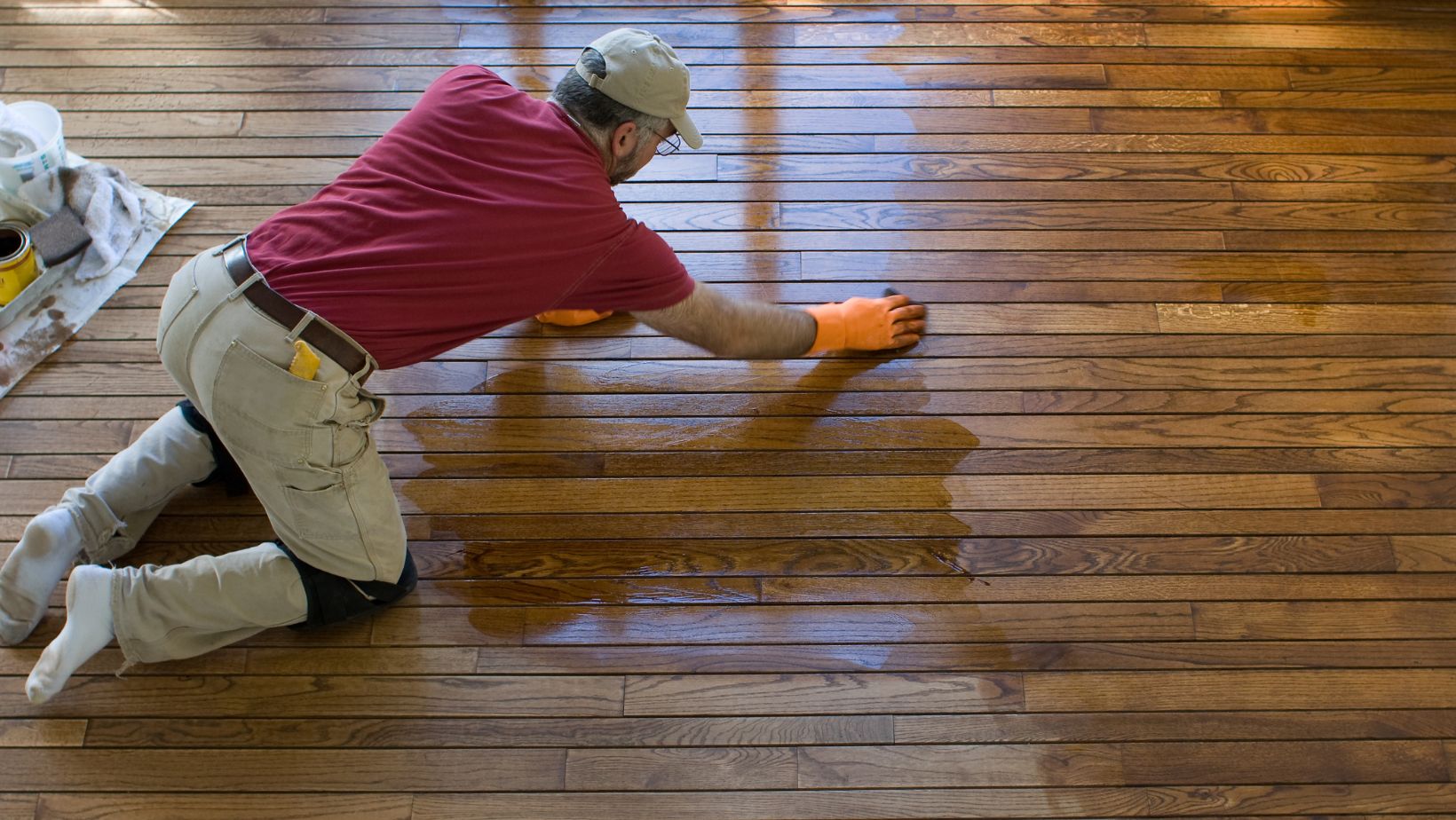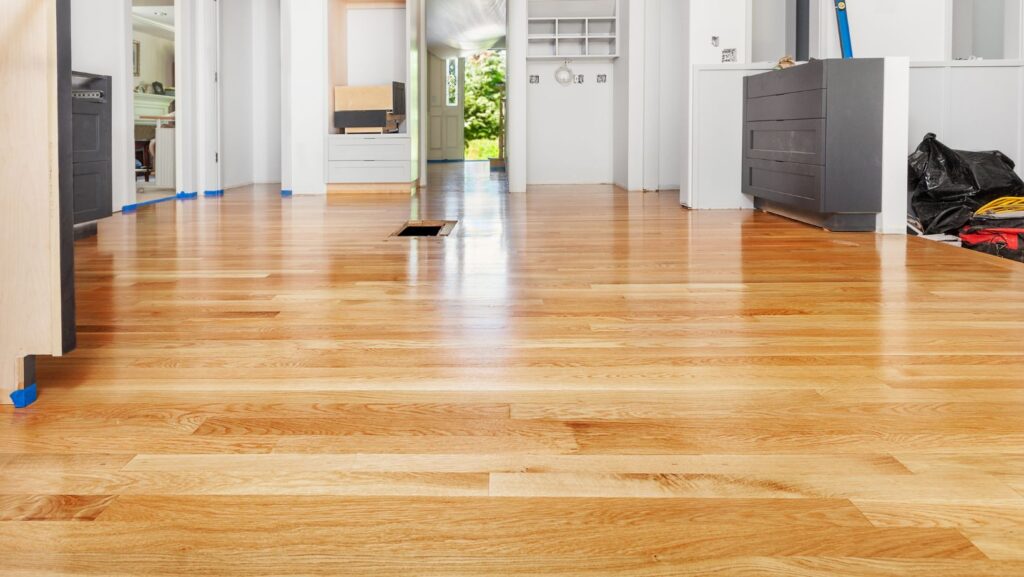Refinishing is particularly beneficial for hardwood floors, which can be sanded and refinished multiple times over their lifespan. Floor refinishing is a process that can breathe new life into your wood floors without the need for a full replacement. Refinishing involves sanding down the top layer of the floor to remove scratches and imperfections, followed by applying a new finish to protect and enhance the wood’s natural beauty. As you explore the benefits and costs associated with refinishing versus replacement, you’ll gain greater confidence in managing your flooring needs.
The Benefits of Floor Refinishing vs. Replacement
Choosing between refinishing and replacement hinges on several factors, including cost, time, and desired outcome. Refinishing is often the more cost-effective solution, allowing you to extend the life of your floors at a fraction of the cost of replacement. This is particularly advantageous if your floors are structurally sound but have surface-level damage, such as scratches or dullness.
Refinishing offers a quicker turnaround compared to replacing floors. Replacement involves removing the old flooring, preparing the subfloor, and installing new material, which can be time-consuming and disruptive. That’s why many homeowners in Denver choose 1 DAY Refinishing for wood floor refinishing projects – the process can typically be completed within a few days, minimizing the impact on daily life and allowing them to enjoy refreshed floors sooner.
In addition to cost and time savings, refinishing enables you to preserve the original character of your home. Older homes, in particular, often feature unique wood species or patterns that are difficult to replicate with new materials. By opting for refinishing, you maintain the authenticity and charm of your space while achieving a like-new appearance. This approach not only enhances your home’s value but also supports sustainable living by conserving resources.
Cost Analysis: Floor Refinishing vs. Replacement
When considering the financial implications of floor refinishing versus replacement, it’s crucial to analyze all associated costs. Floor refinishing typically costs between $3 and $8 per square foot, depending on the type of wood, the condition of the floor, and the finish used. On the other hand, replacing floors with new hardwood can range from $8 to $14 per square foot, including materials and installation.
 To further illustrate the cost savings, consider a 500-square-foot room. Refinishing may cost between $1,500 and $4,000, whereas replacement could run from $4,000 to $7,000. These figures demonstrate how refinishing can be a financially prudent choice, especially for larger areas. Additionally, refinishing can often be completed more quickly than a full replacement, reducing labor costs and minimizing disruption to your home life.
To further illustrate the cost savings, consider a 500-square-foot room. Refinishing may cost between $1,500 and $4,000, whereas replacement could run from $4,000 to $7,000. These figures demonstrate how refinishing can be a financially prudent choice, especially for larger areas. Additionally, refinishing can often be completed more quickly than a full replacement, reducing labor costs and minimizing disruption to your home life.
Beyond the direct costs, refinishing can also enhance your home’s resale value. Potential buyers often appreciate original hardwood floors, and a well-executed refinishing job can make a positive impression, possibly leading to a higher selling price. This potential return on investment further supports the case for choosing refinishing over replacement.
Signs Your Floors Need Refinishing
Recognizing the signs that your floors need refinishing can help you address issues before they escalate into more significant problems. One of the most common indicators is the presence of surface scratches or wear patterns, especially in high-traffic areas such as hallways or living rooms. Over time, these imperfections can detract from your floor’s appearance and compromise its protective finish.
Fading or discoloration is another telltale sign that refinishing may be necessary. Sunlight exposure and daily wear can cause the original finish to fade or develop uneven tones, making your floors look aged and neglected. Refinishing restores the uniformity of your floor’s color and sheen, enhancing its overall appearance and extending its lifespan.
Loose or creaky floorboards can also signal the need for refinishing. While these issues may initially seem minor, they can indicate underlying structural concerns that, if left unaddressed, could lead to more significant damage. By opting for refinishing, you can address these problems while enhancing your floor’s durability and stability, ensuring it remains a beautiful and functional part of your home.
The Floor Refinishing Process: What to Expect
Understanding the steps involved in floor refinishing can help set realistic expectations and ensure a smoother experience. The process typically begins with a thorough cleaning of your floors to remove dirt and debris, followed by the sanding stage. Sanding is a critical step that removes the old finish and smooths any imperfections, providing a clean slate for the new finish.
After sanding, any necessary repairs are made to address issues such as loose boards or gaps. This ensures the structural integrity of your floors and enhances the final result. Once repairs are complete, a stain may be applied if you’re looking to alter the color of your wood. Staining can be customized to match your design preferences, offering a wide range of colors from natural wood tones to more modern hues.
The final step in the refinishing process is applying the finish, which protects the wood and enhances its appearance. There are several types of finishes to choose from, including water-based, oil-based, and polyurethane, each offering different levels of durability, sheen, and maintenance requirements. By selecting the right finish, you can achieve the desired look and ensure the longevity of your refinished floors.
Choosing the Right Finish for Your Floors
Selecting the appropriate finish for your floors is a critical decision that impacts both the appearance and durability of your refinished surface. Many factors should be considered, including the type of wood, the level of foot traffic in your home, and your personal style preferences. Understanding the characteristics of different finishes can help you make an informed choice.
Water-based finishes are popular for their quick drying times and low odor. They provide a clear, natural look that highlights the wood’s grain and are less likely to yellow over time. These finishes are ideal for households with children or pets, as they offer a durable, scratch-resistant surface. However, they may require more frequent maintenance compared to other options. According to an EPA study, water-based polyurethane finishes reduce the emission of volatile organic compounds (VOCs) and hazardous pollutants by 50–90% compared to traditional finishes.
Oil-based finishes, on the other hand, offer a rich, warm glow that enhances the natural beauty of wood. They are known for their durability and long-lasting protection, making them suitable for high-traffic areas. While they take longer to dry and emit a stronger odor during application, the resulting finish is often worth the wait for those seeking a classic, timeless look.
Polyurethane finishes provide a robust, protective layer that is resistant to scratches and moisture. Available in both water-based and oil-based formulas, polyurethane offers varying degrees of sheen, from matte to high gloss. This versatility makes it a popular choice for homeowners seeking a balance between aesthetics and performance.
When to Call in the Professionals for Floor Refinishing
While DIY projects can be rewarding, floor refinishing is often best left to professionals, especially if you lack experience or access to specialized equipment. Hiring a professional ensures that the job is completed efficiently and to a high standard, minimizing the risk of mistakes that could damage your floors or require costly repairs.
Professional refinishers have the expertise to assess the condition of your floors and recommend the best course of action. They are equipped with industrial-grade tools that achieve a smoother finish and ensure uniformity throughout the space. Additionally, professionals can advise on the most suitable finishes and staining options to achieve your desired look.
If you’re considering hiring a professional, do your research to find a reputable contractor with a proven track record. Request quotes from multiple providers and ask for references or examples of previous work. This due diligence will help you select a trustworthy professional who can deliver the results you envision for your home.
Making the Right Choice for Your Flooring Needs
Ultimately, the decision between refinishing and replacing your floors depends on various factors, including budget, time constraints, and the condition of your existing flooring. Floor refinishing offers an economical and environmentally friendly alternative to replacement, allowing you to preserve the character of your home while achieving a fresh, updated look. When you understand the benefits, costs, and processes of floor refinishing, you can confidently choose the option that best fits your needs and preferences.

